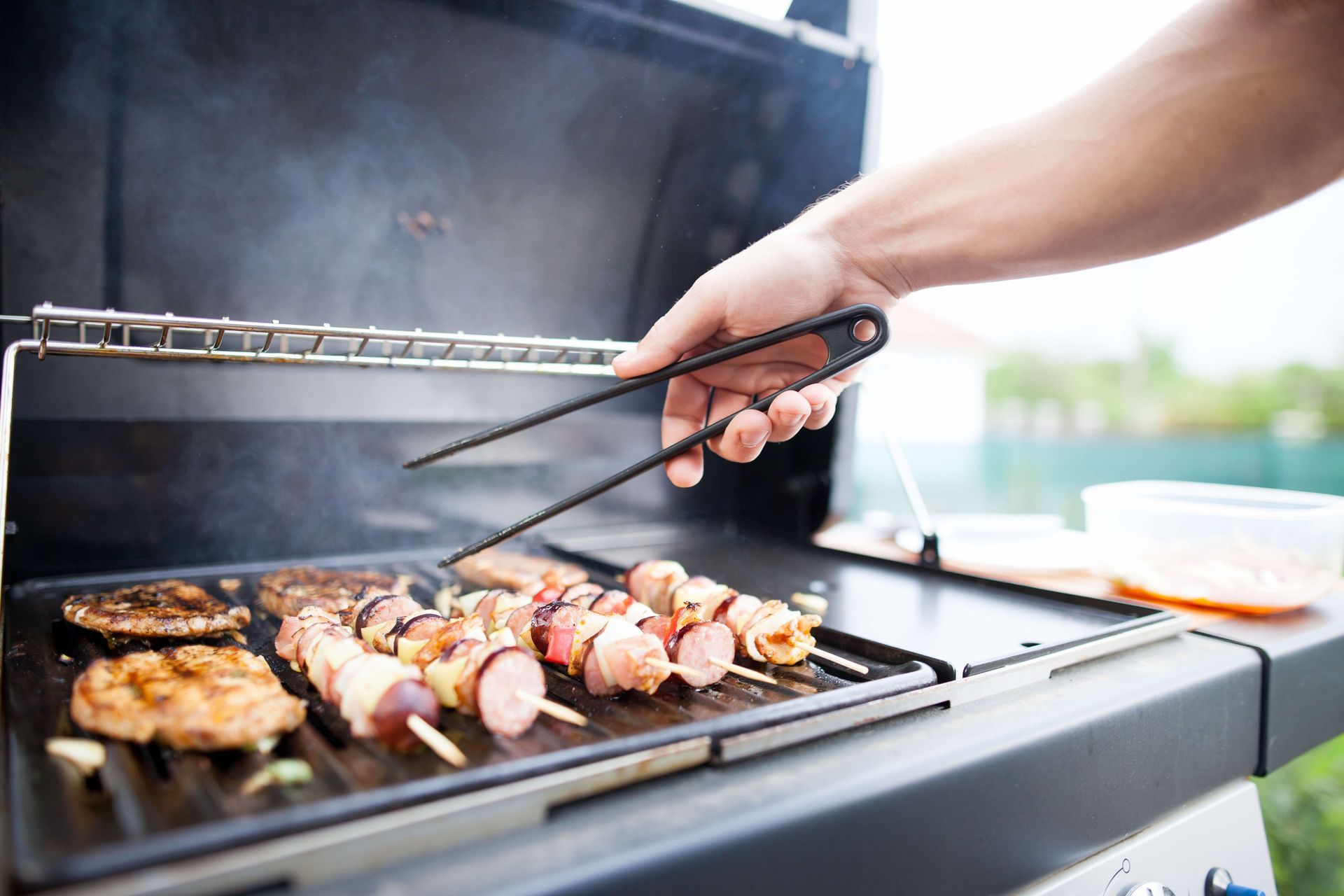We hear it all the time, usually something along the lines of: “We love to eat outside but it's too hot! (or windy or cold!)”
In Southern Utah, the answer starts with thoughtful shelter. A well-placed pergola or covered patio blocks the high sun in summer and offers refuge from dust or light rain. If you extend your roofline a few feet beyond the house, you’ll enjoy morning coffee in shaded comfort and afternoon cookouts without chasing the shade. In winter, that same overhang shields you from chilly winds while still letting in low-angle sun, so you can linger outside even when temperatures dip.
Cooking outdoors is more than wheeling a grill onto the driveway. Think built-in counters with weather-proof surfaces, a sink with running water, and storage cabinets sealed tight against dust. A compact outdoor kitchen keeps everything at arm’s reach—utensils, spices, and dishes—so dinner prep flows smoothly from house to porch. Lay a narrow ledge for drinks and snacks so guests can mingle while you cook. With proper planning, you’ll find that evening meals under the sky feel as effortless as setting the table in your dining room.
Comfort beyond cooking means adding warmth and light. A fire pit or gas-fired hearth becomes the gathering point on cool evenings, while infrared or propane heaters under the pergola extend your season even further. String lights or low-glare fixtures around beams cast a soft glow without overwhelming your view of the stars. Choose furniture built for desert extremes—aluminum frames with quick-dry cushions, and tables that won’t warp under blazing sun. Throw in a few outdoor rugs and textured pillows to soften the space and add a cozy touch.
One of the best parts of outdoor living is flexibility. Arrange a dining table for family meals, then slide it aside for yoga at dawn or a game of cornhole at dusk. Use modular seating you can reconfigure for movie nights, card games, or solo reading nooks. Add rolling planters filled with native grasses or succulents to bring life and texture, and move them as the seasons change. With a flexible layout, your space adapts to every activity, so nobody feels cramped when the whole family shows up.
Finally, remember that even the best-designed patio needs basic upkeep. Sweep away dust after storms, rinse pavers to prevent stains, and seal stone surfaces every year to guard against water damage. Store cushions when heavy snow or high winds are forecast, and touch up painted wood once it shows wear. A little maintenance goes a long way toward keeping your outdoor rooms feeling fresh and welcoming.
When you get this balance right—shelter, cooking, comfort, flexibility, and care—you’ll find that your backyard becomes a true extension of your home. Families in Milford, Beaver, and beyond are discovering that with the right design, you can eat, laugh, and relax outdoors all year long. If you’re ready to make your outdoor space a seasonal favorite, let’s talk. I’m Lynae Malchus at Agenda Design+Build, and I’d love to help you bring your vision to life.




